Europe's westernmost beaches are located by the continent’s sunniest capital. Lisbon’s abundant sunshine, mild temperatures and long stretches of sand make it one of Europe's most blessed cities and a unique tourist destination, combining urban pleasures with fun by the sea. Facing the Atlantic, it’s the European capital closest to sandy beaches, with a varied and beautiful coastline. Most of it flies the Blue Flag, indicating cleanliness and water quality, and it’s also one of Europe's major surfing destinations. You can head west to Cascais, north to Sintra, or south to the Caparica, Arrábida and Sesimbra coasts, and there is always a spot for you.
When in Lisbon, a trip to the beach always enhances your city break or holiday experience.
Lisbon Beaches Highlights
-
- Surfing and swimming on Europe’s westernmost coast
-
- Sandy beaches surrounded by natural beauty
-
- Unique resort experience by urban attractions of a European capital
The Lisbon Coastlines
Lisbon doesn’t have one coastline, or two, or even three, it has four very different coastlines! There’s the coast along the Cascais train line, which faces south and passes by the suburbs of Oeiras and Estoril; the coast of the Sintra mountain range which faces west, the Caparica coast to the south, and the coast of the protected Arrábida Natural Park.
Cascais
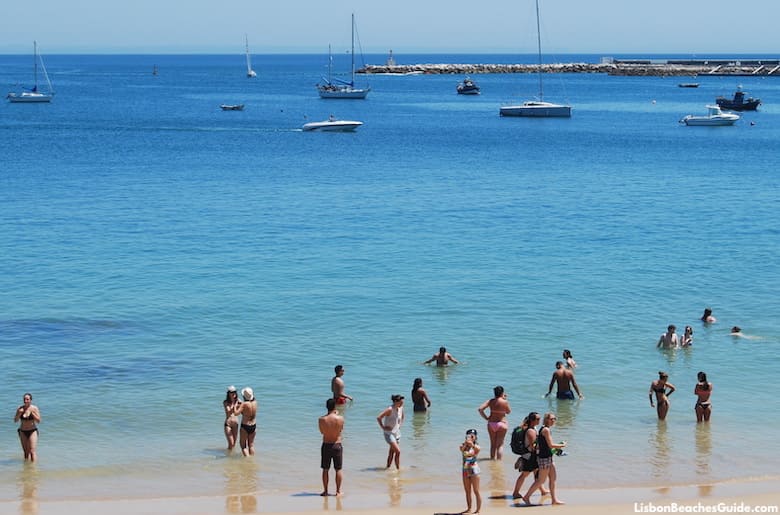
The Cascais coastline extends to the west of Lisbon and is the easiest to reach (by a regular train service). It’s therefore the most popular with tourists (especially families and couples), and has some beautiful sandy beaches with calm waters, good facilities, and excellent hotels by the sea. The Old Town, which is the last stop of the train, is quite an attractive and cosmopolitan destination for a day at the beach or a beach-based vacation.
Sintra
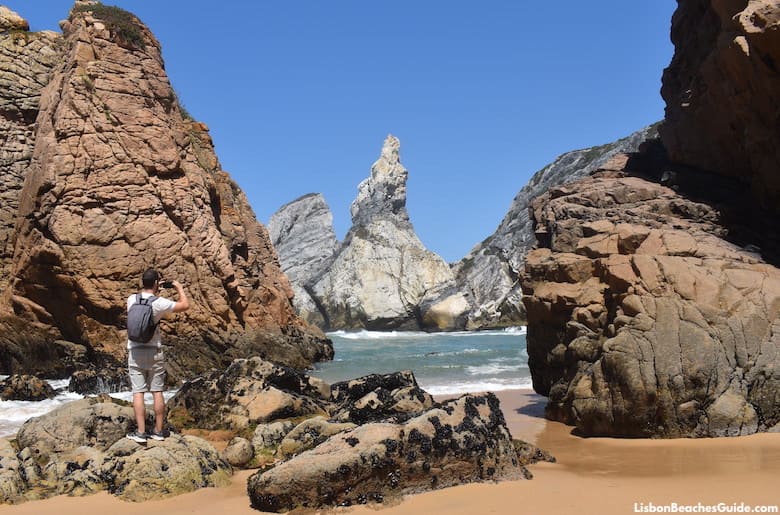
The coastline below the Sintra mountain range is found to the north of Cascais, and is a wilder coast. Public transportation to the beaches is rather infrequent, so it attracts few tourists. Those who plan carefully or who choose to rent a car, however, are rewarded with a dramatic natural landscape made up of white sand nestled between towering cliffs and rugged rock formations. It tends to be windy and therefore cooler, but the powerful waves attract surfers. Nearby is Cabo da Roca, a cape that’s the westernmost point of the European continent.
Costa da Caparica
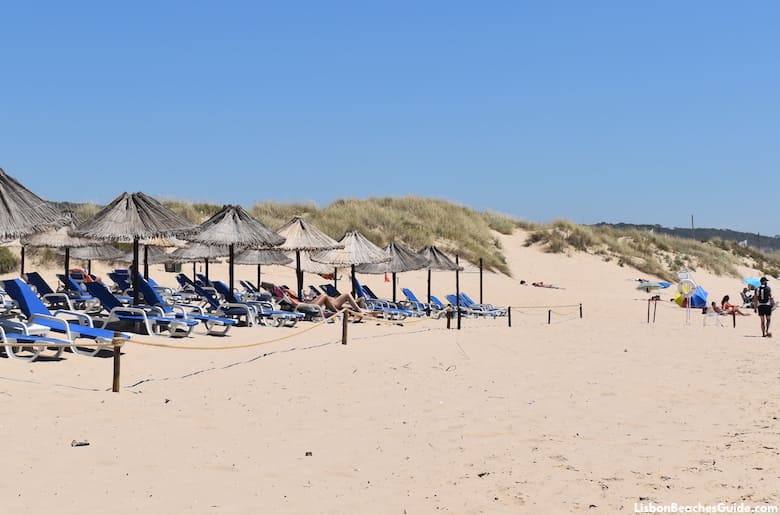
The Caparica coastline lies to the south of Lisbon, and is one continuous 15km- (nearly 10 mile-) stretch of golden sand. It’s really one long beach, but is divided into different sections, each with its own atmosphere and type of crowds. It’s also a trendy place to be on summer nights, thanks to the beach bars. Buses connect Lisbon to the town of Costa de Caparica, and during the bathing season there’s a small tourist train that runs down the coast from the town, stopping at several beaches. Despite the transportation links, it’s still better reached by car, and there are few places to stay, so it mostly attracts locals.
Arrábida
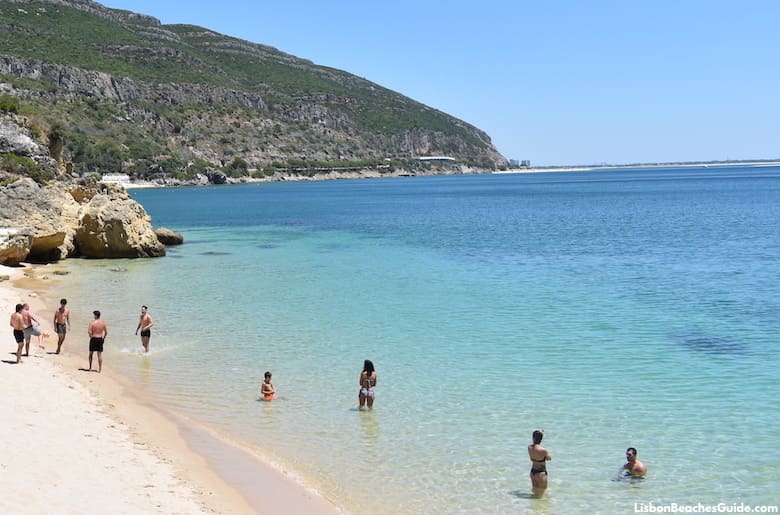
Still part of the Lisbon region, the romantic Arrábida coastline (further south by the city of Setúbal) has some of the most beautiful beaches in Portugal. Surrounded by the lush hills of the Arrábida Natural Park, it has calm, crystal-clear waters and soft golden sand. It’s a protected area best reached by car, but the public transportation connections have improved. However you get there, you'll enjoy pristine beaches of great natural beauty and secluded spots.
Sesimbra
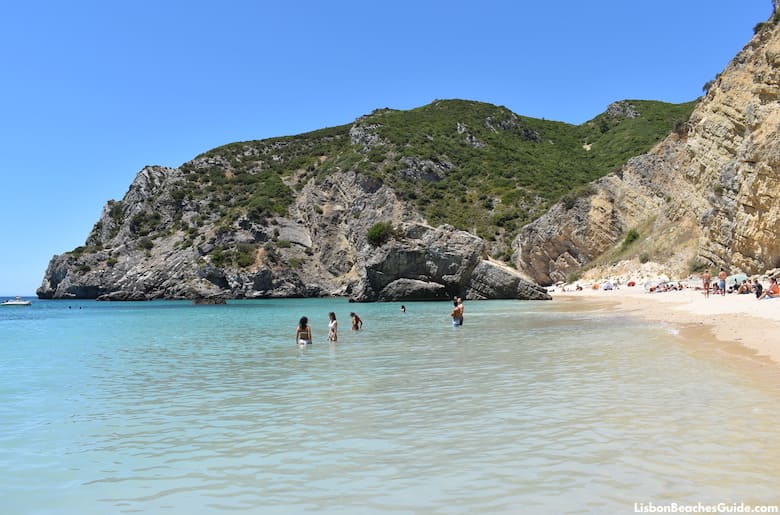
The Arrábida Natural Park extends to Sesimbra, which also has some of Portugal's finest beaches, and immediately to the south is the Troia peninsula, which, although no longer part of the Lisbon region, is easy enough to reach on a day trip.
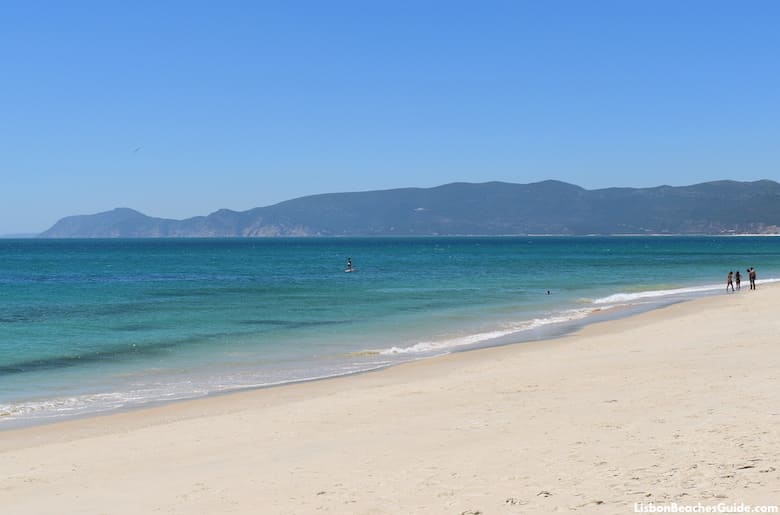
Choosing the Right Beach for You in Lisbon
Which beach you choose depends on how far you’re willing to travel, your transportation options, your travel companions, and what kind of experiences you want to have:
- Easiest to Reach by Public Transportation:
Praia da Conceição, Praia da Rainha, Praia do Tamariz, Carcavelos
- Most Beautiful Beaches:
Praia da Ursa, Praia do Ribeiro do Cavalo, Praia dos Galapinhos, Praia do Creiro, Praia da Adraga, Praia do Guincho, Praia de Santa Marta, Praia da Rainha
- Closest to the Center of Lisbon:
Carcavelos, Praia de Santo Amaro, Praia de Caxias
- Best Beaches for Sports:
Carcavelos, Costa da Caparica
- Best Beaches for Surfing:
Carcavelos, Costa da Caparica, Praia do Guincho, Praia da Cresmina, Praia Grande, Praia do Magoito
- Largest Beaches:
Costa da Caparica, Carcavelos, Troia
- Best Beaches for Families:
Praia da Rainha, Praia das Moitas, Praia de Santo Amaro, Praia das Maçãs, Praia da Figueirinha, Praia do Creiro
- Romantic Beaches:
Praia da Ursa, Praia do Ribeiro do Cavalo, Praia do Creiro, Praia da Rainha, Praia de Santa Marta
- Gay Beach: Praia 19
- Nude Beaches: Meco, Praia da Adiça, Rio da Prata, Praia 19, Praia da Ursa, Praia da Aguda, Praia da Adraga
- Best resort town: Cascais
The Fortresses on the Lisbon Coast
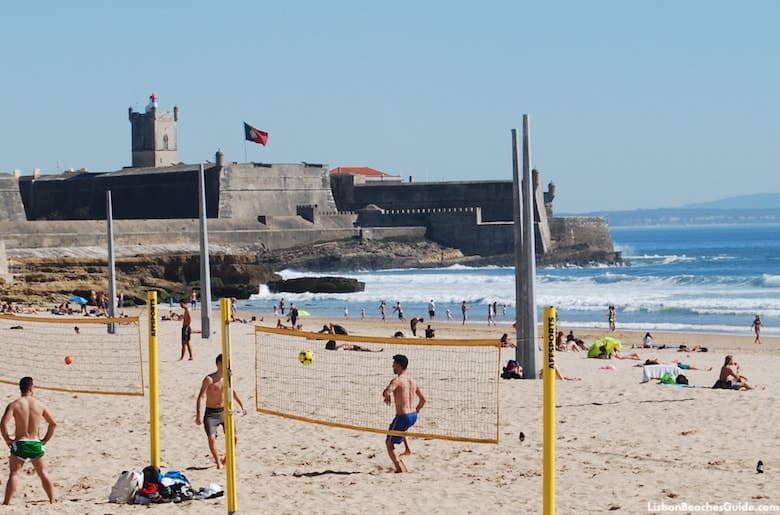
Once you pass Belém (the last Lisbon neighborhood before the seaside suburbs), you see a number of fortresses along the coast. They mostly date from the 1600s, and were built to protect Lisbon from “unwelcome visitors,” as the Portuguese capital received spices and gold from its colonies in Asia and Brazil. The oldest fortress dates back to 1553, and is found in Oeiras, but the others are from between 1647 and 1679. Some of these military constructions also served as residences, but are now mainly landmarks on some of Lisbon’s most popular beaches. Sadly, only a few have been restored and are in use (as official residences or as a hotel, as is the case of the Guincho fort). Most are closed and in a state of disrepair. The last cannon was fired in 1998, as a symbolic act to mark the end of the military function of these constructions.
